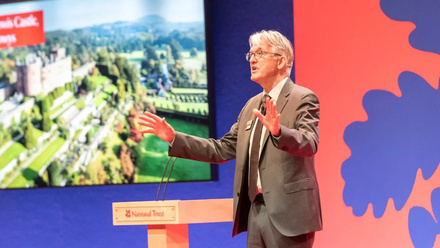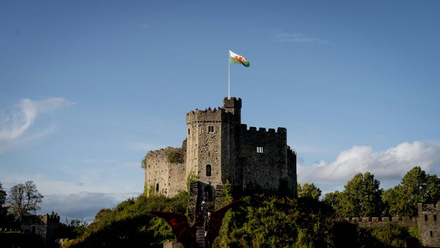New report highlights UK heritage bodies’ pioneering response to climate change
The UK heritage sector is united in its pioneering response to climate change according to Heritage Responds, a new report launched this week by heritage coalition the Historic Environment Forum charting how heritage organisations are taking positive action.
You can read the Heritage Responds report here.
Icon is one of the 21 members of the Historic Environment Forum, which brings together senior members of staff from public and non-government heritage bodies to engage with key strategic matters for the sector. Icon is a member
The report brings together the expertise of 26 of the country’s leading heritage organisations - including English Heritage, Historic England and the National Trust - ahead of COP26 in Glasgow to highlight examples of how through revolutionary research, carbon reduction and maximising the potential of the historic environment, the heritage sector is making a major contribution to the response to climate change.
Sara Crofts, Chief Executive of Icon said:
To achieve a sustainable future, we all need to be more generous about sharing our hard-won knowledge – both the measures that ensured that our projects were a success, or indeed those that caused them to fail. This excellent collection of case studies demonstrates the power of example, and will be a great resource to help cultural heritage organisations play an active role in addressing the challenges of climate change.
The work is the culmination of six months of collaboration by the members of the Historic Environment Forum and showcases how the sector is responding to climate change, including investment in traditional low-carbon building adaptation techniques, nature-based solutions to mitigate future impacts, and renewed efforts to increase the lifespan of heritage assets and save the embodied carbon which might otherwise be sacrificed in demolition, new construction, or poor upkeep.
Rob Woodside, Chair of the Historic Environment Forum’s COP26 Task Group and English Heritage Estates Director said:
What Heritage Responds clearly demonstrates is the proactive work of so many organisations across the heritage sector to find solutions – leading on ground-breaking research, innovating on approaches to adaptation, harnessing the use of technology, retro-fitting historic buildings and reducing carbon emissions by retaining and reusing existing buildings.
Heritage organisations are pioneering the sector’s response to climate change. Ahead of COP26, we wanted to share our experience of our sustainable response to the greatest challenge of our time. The case studies we have highlighted show not only how heritage organisations are responding to the impact of climate change, but also how we can be part of the solution.
The case studies within the report highlight some of the UK’s leading projects to introduce sustainable solutions in the historic environment, including:
- The Grade II listed Art Deco Jubilee Pool in Penzance, the first lido in the UK to harness geothermal heating as part of a new scheme supported by the Architectural Heritage Fund opened in August 2020.
- A £2.5m project, co-led by National Trust and the Nidderdale Area of Outstanding Natural Beauty– aided by a £1.4m grant from National Lottery Heritage Fund – which will implement nature-based solutions to improve the resilience of the Skell Valley’s resilience to changing weather
- A £90m Grosvenor Britain & Ireland programme to reduce energy use and carbon emissions across their historic Mayfair and Belgravia portfolio by over 70% by 2030.
- A hidden array of 150 photovoltaic panels installed on the south-facing slope of Gloucester Cathedral’s medieval roof, supported by Historic England.
- Ingenious smart sensors being used to help protect the priceless art collection at English Heritage’s Kenwood House in North London.
- An innovative new heating scheme from the Church of England at Bath Abbey, using warmth recovered from Roman drains which carry the city’s hot spring water.
Alongside examples from heritage buildings in public ownership, the report also highlights case studies relevant to the almost a third of the UK population who live in buildings built before 1919, showcasing how homes can be made sustainable by adapting and “retrofitting” to help them compete modern low energy standards. These include a ground-breaking project which has seen Victorian townhouses in Manchester adapted to meet demanding PassivHaus standards for energy efficiency, and new training for craftspeople on improving energy efficiency in traditional buildings.
The case studies also shed new light on how the sector is ensuring there is an active dialogue between the natural environment and historic sites, including incorporating issues of flood toleration and improving biodiversity into plans for Somerset’s historic Toneworks textile mills - supported by Historic England - and a CITiZAN’s Museum of London Archaeology historic mapping project which made use of photos, postcards and memories from the community to map twentieth century changes in the Essex coastline.
To complement the report, the Historic Environment Forum has also launched a Heritage Responds storymap providing digital mapping of all the case studies and demonstrating the geographical breadth of the heritage sector’s action to address climate change.






